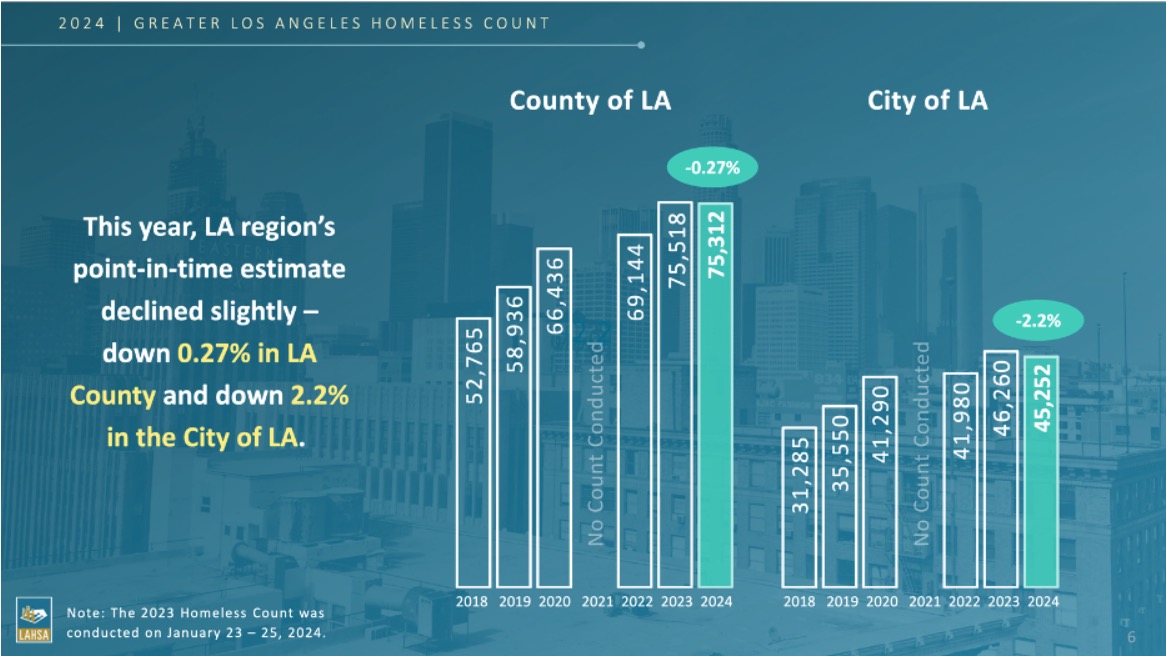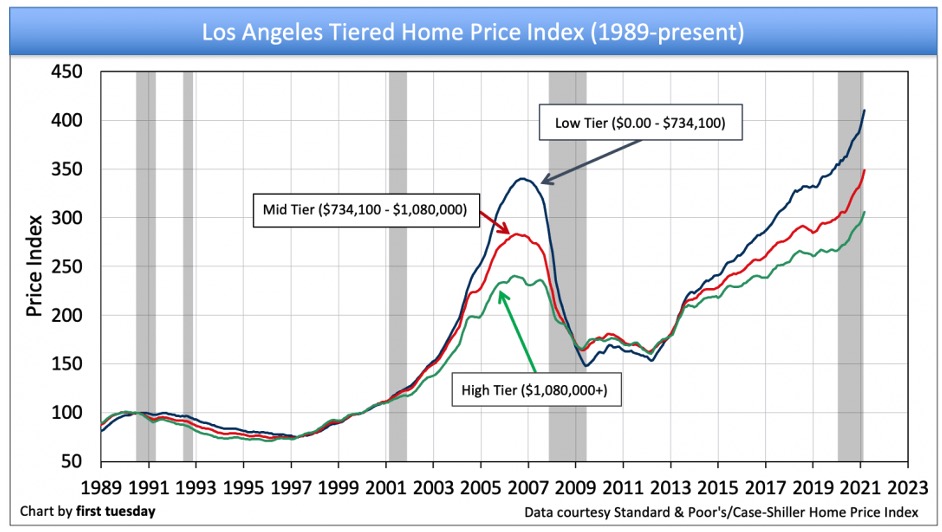Comments
PLANNING WATCH - This chart reveals that homelessness in Los Angeles County, a mirror for the rest of the United States, has substantially increased since 2018. The reason for this increase is that homeless programs focus on the personal traits of the homeless, not the public policies responsible for homelessness. Homelessness is erroneously attributed to mental illness, drug addiction, and an imaginary housing shortage, even though there are 15 million vacant homes in the United States. Based on this deceptive analysis, the top-down remedy to the housing crisis is typically increasing the number of housing units that can be legally built on existing parcels.

Unfortunately, this explanation, and the policies that it justifies, make the rich richer and the homeless crisis worse. When cities or counties increase the density of housing units permitted on existing parcels, they increase their market value. Buyers pay more for them because their cash flow increases. This bonanza is the hidden agenda of the densifiers since this non-solution to homelessness increases property values. This, in turn, raises apartment rents and the price of houses, creating more homelessness.
While incomes have been stagnant for the past 50 years, the cost of housing and land has dramatically increased. To make matters worse, the cost of lower-priced housing in Los Angeles and elsewhere has increased even faster. In fact, between 1950 to 1970 housing prices in coastal California remained steady, at a ratio of 3 between housing prices and income. Since 1970, however, the region’s affordability ratio has increased from 3 to 11. Ths means that in coastal California, including the Los Angeles area, the cost of housing markedly increased while family incomes remained flat. This is why homelessness has dramatically increased over the past decade. Even though personal pathologies, like drug addiction, dominate media coverage homelessness they are NOT the main cause of homelessness.

This is why the well-intentioned Measure A on the November 2024 ballot will not meet its goals of reducing homelessness in Los Angeles Country, even though this .5 % sales tax would generate $1 billion per year.
My critique of Measure A is not just its regressive funding source, but that it also ignores four underlying causes of the housing crisis.
First, Measure A ignores the elimination of the two major funding sources for public (non-market) housing. The largest funder of public housing funding was the Federal Department of Housing and Urban Affairs. Its public housing programs were suspended by President Richard Nixon in 1973 through a moratorium. Subsequent U.S. Presidents, especially Ronald Reagan and Bill Clinton, expanded Nixon’s efforts. Now, the only remaining HUD housing program is severely underfunded Section 8 private housing vouchers.
The second source of public housing funding only existed in California. The Governor and California State Legislature dissolved the state’s 400 plus Redevelopment Agencies in late 2011, and these former agencies had to spend 20 percent of their budgets on affordable housing.
Second, Measure A does not address the most important cause of the homeless crisis, the growing gap between incomes and rising housing costs. Quite literally people have been priced out of private sector housing, especially in California. Obvious solutions to close this gap, such as increasing wages, are absent in Measure A.
Third, gentrification and mansionization has proceeded with few constraints in the Los Angeles region for over two decades. The only effective protection is an Historical Preservation Overlay Zone (HPOZ). Unfortunately, they are difficult to obtain and only apply to a small percentage of residential neighborhoods. As a result, my estimate is that 40,000 houses have been demolished in Los Angeles since the year 2000, nearly all replaced with McMansions. These McMansions house the same number of people, even though they are three times the size and price of the homes they supplanted.
Fourth, in Los Angeles rent control only applies to apartments built before 1978. Each year the percentage of apartments built after this cutoff date increases.
Since Measure A does not address these root causes of homelessness, the number of homeless people will continue to grow. While the solutions are known, such as wage increases, anti-mansionization laws, and the restoration of public housing programs, they require major political and economic changes to happen.
(Dick Platkin is a retired LA city planner, who reports on local planning issues for CityWatchLA. He is a board member of United Neighborhoods for Los Angeles (UN4LA). Previous columns are available at the CityWatchLA archives. Please send questions to [email protected].)
















